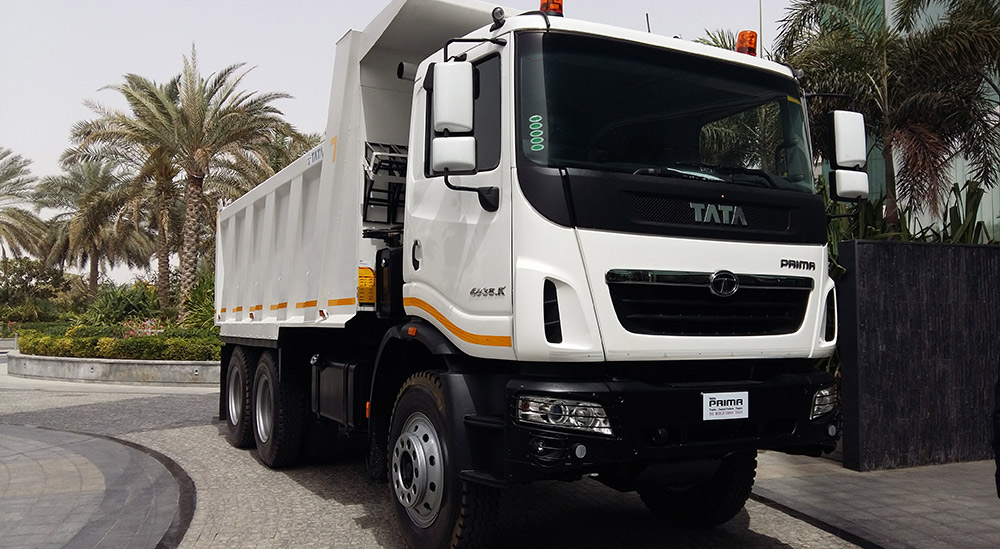Indian motor company breaks into the region with a brand new design and advanced technology that competes with global standards
Tata Motors, one of India’s largest automobile manufacturer, launched two new next-generation heavy duty trucks in Dubai in March this year. The manufacturer along with UAE dealer-partners, United Diesel and Dalma motors launched the Prima range of commercial vehicles including the Prima 4438S (4X2) tractor head and the Prima 4038K (6X4) Construction tipper.
The Tata Prima range claims superior technology, optimum power, fuel efficiency and safety. Ravindra Pisharody, Executive Director of Commercial Vehicles Business Unit at Tata Motors, says: “The new range of commercial vehicles by Tata Motors is shaped by technology, know-how and expertise from across the globe.” It is built with technical inputs from across the world; with an Italian cab design, American and European engine technology, gearbox expertise from Germany, chassis frame know-how from Mexico, sheet metal dies from Japan and Korea, and Swedish precision on a robotic weld line, hence branding itself as a “world truck”.
RT Wasan, Head of International Business of Commercial Vehicle Business Unit at Tata Motors, says: “We observed specific regions separately, to see what the requirements and operations of these regions are and thus provide optimal solutions through our trucks.” He explains that these trucks are specifically designed for the Middle East, the tonnage capacity of the truck is much heavier in the UAE compared to other markets. “This is because there are less restrictions in UAE regarding heavy overloads compared to other countries such as South Africa. Thus the Prima is designed for South Africa is very different from the Prima designed for the UAE here.”
Apart from the mechanics of the vehicle, the range also focuses on driver comfort. The cockpit is both functional and visually ergonomic with a separation in terms of the working and living area.
Wasan says: “We have consciously considered the ergonomics, not just for the driver but also for co-driver. A driver spends his life inside the truck—more than 70% of his time is spent in it. Hence it must be designed for optimal comfort.”



